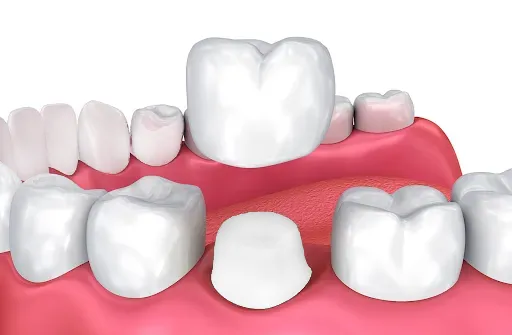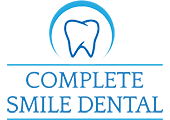Restorative dentistry addresses both the aesthetics and functionality of your teeth, ensuring each aspect of your oral health is comprehensively cared for. Not only can restorative treatment options like veneers, inlays, onlays and crowns enhance the look of your smile, they can also represent major improvements to your oral well-being. The boost this gives your self confidence and your overall health can genuinely revitalise you, giving you greater zest for life.

Veneers enhance the appearance of your teeth, offering a cosmetic solution for various imperfections.

Inlays and onlays are ideal for addressing moderate damage by restoring and reinforcing specific areas of the tooth.

Crowns provide strong protection and structural support, particularly effective for extensive restoration.
These cosmetic dental solutions are tailored to address your dental needs, helping you achieve a beautiful and functional smile. This not only makes you look great and feel confident but also ensures the optimal function of your teeth, significantly enhancing your overall quality of life.
Tooth restoration options
Dental veneers
Veneers serve a primarily cosmetic purpose, enhancing the visual appeal of teeth. These thin shells, commonly made of porcelain or composite resin, are custom-crafted to bond seamlessly to the front surface of teeth. Veneers are a popular choice for addressing issues such as discoloration, minor misalignments, chips or small gaps, contributing significantly to the improvement of a person’s smile.
Inlays
Inlays are designed as a conservative approach to restore teeth which have moderate damage or decay. Custom-fitted to the indented or concave surface within the cusps of a tooth, inlays provide a precise restoration that goes beyond the limitations of a traditional filling. This option is chosen when the damage doesn’t warrant a full crown but requires more than a simple filling.
Onlays
Onlays extend their coverage to address larger areas of damage on a tooth. While inlays are confined within the cusps, onlays cover not only the indented surface within the cusps but also extend over one or more cusps. This makes onlays suitable for cases where the damage is more extensive, such as larger cavities or fractures that fall between the categories of inlays and crowns.
Crowns
Crowns, the most comprehensive of these restorative options, provide full coverage and protection for severely damaged or weakened teeth. Encasing the entire visible portion of a tooth above the gum line, crowns are versatile and can be used to meet a range of needs. They are often used to treat extensive decay and large cavities, after a root canal treatment or for cosmetic reasons to improve the appearance of misshapen or discoloured teeth.
Your specific dental needs and conditions determine which of these options is the best for you, helping you achieve both functional restoration and aesthetic enhancement.

How are they made?
The creation of dental veneers, inlays, onlays and crowns requires a meticulous approach to ensure a precise, durable and a seamless fit for each patient.
1. Consultation and assessment: Your cosmetic dental journey begins with a comprehensive consultation. During this session, your dentist evaluates your oral health, discusses your goals and preferences and collaborates with you to decide on the most effective restoration.
2. Impression or digital scan: An impression or digital scan of your teeth is taken to create a detailed model, ensuring that the restoration will fit precisely within your unique dental structure.
3. Tooth preparation: Depending on the type of restoration, your tooth may undergo preparation, involving the removal of damaged or decayed portions. This step is crucial for ensuring a secure fit and proper bonding.
4. Design and fabrication: Your dentist will then use the data collected from your impression or digital scan to design the restoration. They produced it from materials such as porcelain, composite resin or metal alloys, chosen based on factors like durability, aesthetics and your specific requirements.
5. Shaping and colour matching: The restoration undergoes meticulous shaping and polishing to mimic the natural contours of your tooth. The colour is then matched to your existing teeth for a more uniform smile.
6. Bonding or cementing: The final step involves bonding or cementing the restoration onto your prepared tooth. Special adhesives are used to ensure a secure and long-lasting attachment, completing your personalised dental restoration.
Why restore teeth?
Restoring teeth through procedures like veneers, inlays, onlays and crowns offers far-reaching benefits for oral health and overall well-being. Here are some key advantages:
Improved aesthetics: Dental restorations enhance the appearance of teeth, addressing issues such as discolouration, misalignment, chips and gaps. This leads to a more attractive and confident smile.
Enhanced functionality: Restorative procedures not only improve the look of teeth but also contribute to their functionality. Well-fitted restorations, like crowns, can strengthen weakened teeth, facilitating proper chewing and speaking.
Protection against further damage: Crowns, inlays and onlays provide protective layers for damaged or weakened teeth, preventing further deterioration. This protection is essential for maintaining long-term oral health.
Preservation of natural tooth structure: Conservative restorations, such as inlays and onlays, focus on preserving the natural structure of the tooth while addressing moderate damage. This helps maintain the integrity of the tooth.
Long-term durability: Dental restorations, when well-maintained, can be durable and long-lasting. Materials like porcelain and composite resin used in veneers and crowns are resilient and designed to withstand daily wear.
Boosted confidence and self-esteem: Aesthetic improvements resulting from dental restorations often lead to increased confidence and self-esteem. The positive impact on one’s appearance can extend to various aspects of life.
Prevention of tooth sensitivity: Restorations can alleviate tooth sensitivity caused by exposed dentin or damaged enamel. This is particularly relevant for individuals with conditions like enamel erosion or teeth grinding.
Tailored solutions for various issues: Whether addressing cosmetic concerns with veneers or providing comprehensive coverage with crowns, the versatility of dental restorations allows for tailored solutions to diverse dental issues.
Facilitation of proper oral hygiene: Well-fitted restorations contribute to easier oral hygiene maintenance. They create a smoother surface that is easier to clean, reducing the risk of plaque buildup and related issues.
Overall quality of life improvement: The combined benefits of improved aesthetics, functionality and oral health contribute to an enhanced overall quality of life. A healthy and confident smile positively impacts social interactions and self-perception.
Take care of your smile by visiting your dentist
Where restoration is needed, the earlier you start investigating your options the better your outcomes are likely to be. Consult your dentist to ensure your decisions are well-informed and tailored to your specific oral health needs.
Your dentist will check your teeth, clear up any uncertainties and create treatment plans that match your goals. Being well-trained, your dentist will ensure you gain a thorough understanding of your restorative options, allowing them to deliver personalised, proactive care for long-lasting benefits.
When you chat openly with your dentist about your concerns, you achieve greater levels of confidence and comfort in your restoration process. So, take heart as you investigate the range of effective options available to meet your unique needs. A healthier, more confident you awaits!


